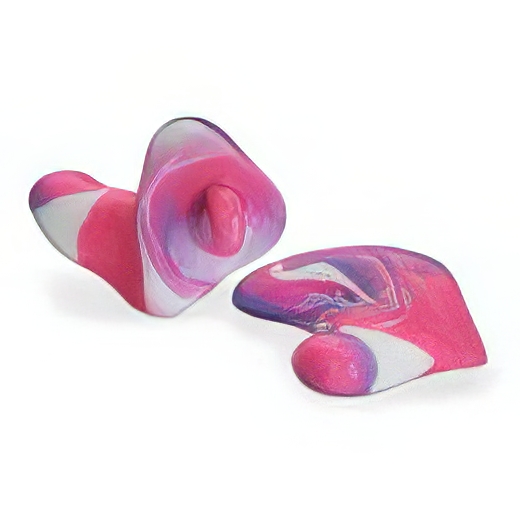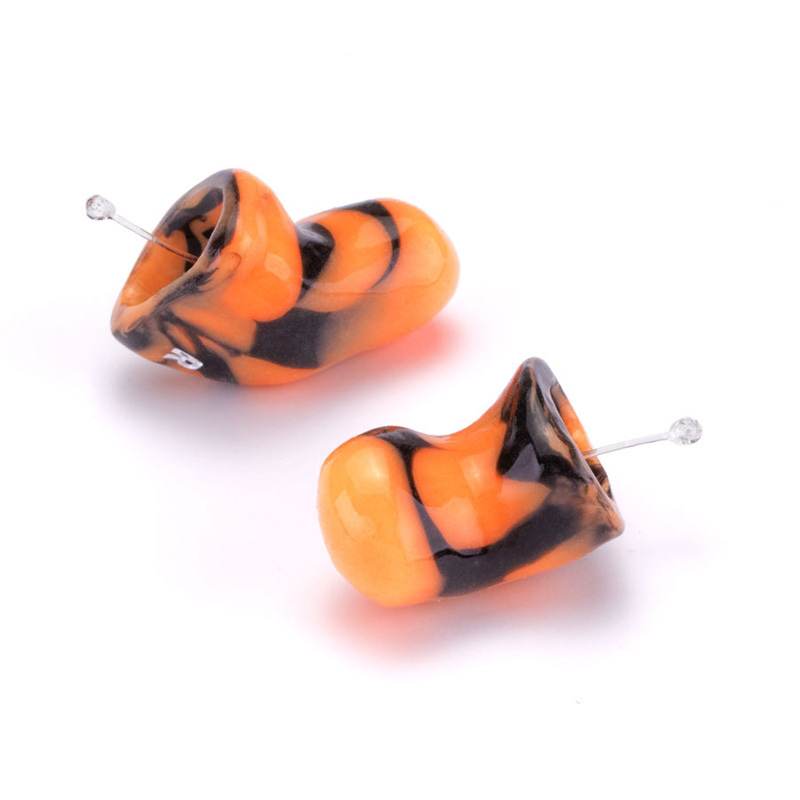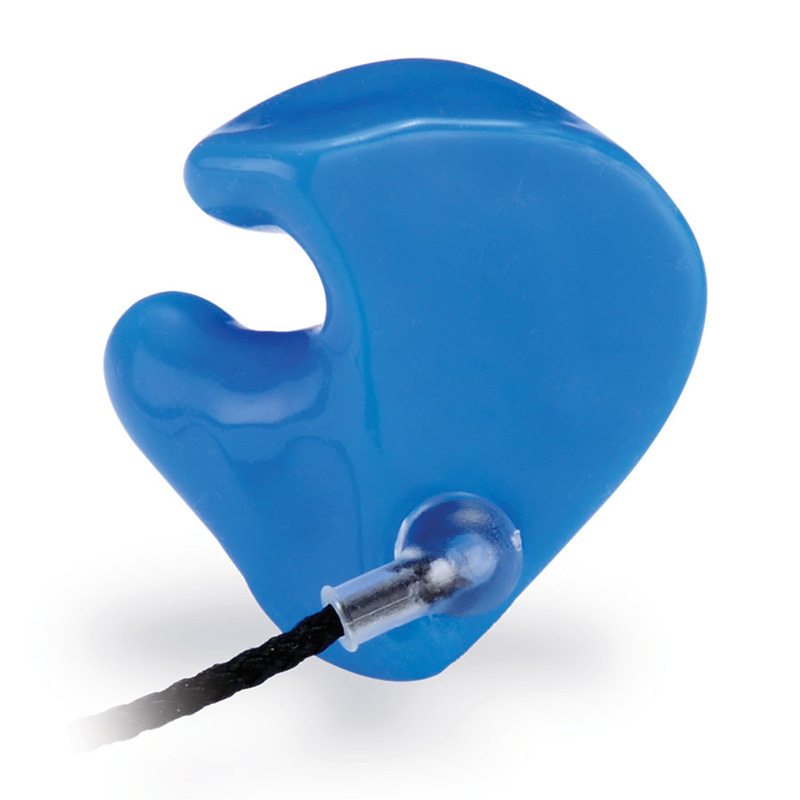CUSTOM SWIMMING EARPLUGS & EARMOLDS
You can clearly hear the sounds of the pool and your surroundings.
Custom swimming earplugs reduce sound to 30 decibels, which is ideal for competitors who need to stay focused on their sport. They can also block water and safeguard hearing from loud noises.
Whether you’re a surfer, shallow snorkeler, or want to enjoy the water, we offer a variety of products to meet your needs.
For individual earplugs or options for your swim club, Contact Us Today!
Crucial Facts
Here are some crucial facts about swimming and its potential impact on hearing loss and infection:
- Swimmer’s Ear (Otitis Externa): Prolonged exposure to water can lead to swimmer’s ear, an outer ear canal infection. Symptoms may include pain, itching, and discharge.
- Water Trapped in Ears: Water that remains in the ears after swimming can create a moist environment that encourages the growth of bacteria and fungi, leading to infection.
- Ear Infections: Ear infections can cause temporary hearing loss due to inflammation and fluid buildup in the ear canal or middle ear.
- Perforated Eardrum: Forceful water entry into the ear (such as diving into a pool) can potentially cause a perforated eardrum, leading to hearing loss and an increased risk of infection.
- Use of Ear Plugs: Wearing earplugs while swimming can help prevent water from entering the ear canal and reduce the risk of infections and hearing loss.
- Proper Ear Drying: After swimming, it’s essential to thoroughly dry the ears to prevent water from remaining in the ear canal, which can help prevent infections.
- Chemicals and Hearing Health: Chlorine and other chemicals used in pools may irritate the ear canal and increase the risk of infection.
- Swim Caps and Ear Protection: Swim caps can also help keep water out of the ears, reducing the risk of hearing loss and infection.
- Prompt Treatment: If you experience symptoms of an ear infection after swimming, such as pain, discharge, or hearing loss, seek medical attention promptly to prevent complications.
Taking proactive measures such as wearing earplugs and keeping your ears dry after swimming can help protect your hearing health and reduce the risk of infections.
Contact Us
Taking care of your Custom Earmolds is not just a routine task but a crucial responsibility that you hold for both its hygiene and performance.
Here’s how to clean, disinfect, and store your earmold to keep it in top condition:
Cleaning an Earmold: To clean your earmold, remove any visible debris from its surface. This step does not eliminate germs but keeps the earmold clear of dirt and debris. You can use dry tissues, paper towels, cleaning brushes, or wire loops.
Disinfecting an Earmold: Disinfecting your earmold removes both contamination and germs. For this, use moist, non-alcohol-based disinfectant surface wipes or a spray of a similar solution.
Sterilizing an Earmold: Sterilization is necessary if your earmold has been in contact with contaminated bodily fluids like blood or mucus. If this happens, take your earmold to a hearing aid specialist. The specialist will remove the earmold from the device and immerse it in a germicide solution for thorough sterilization.
Earmold Storage and Care:
- Avoid:
- Placing your earmold on surfaces prone to bacteria and fungi growth, such as countertops, desks, purses, or pockets.
- Store your earmold in non-washable containers, such as jewellery boxes, cardboard boxes, or paper envelopes.
- Allowing others to handle your earmold if they need to be made aware of proper disinfection methods.
- Do:
- Store your earmold in a washable plastic container. Most modern earmolds come with such containers.
- Clean and disinfect your earmold daily, especially after use.
Following these simple steps can help you maintain the longevity and cleanliness of your earmolds.
As a Custom Earplug user, your role in keeping them clean is crucial for their longevity and your ear health. Here’s how you can take charge and properly clean, disinfect, and maintain your earplugs:
Cleaning Your Earplugs: Start by filling a small bowl with warm water and a mild cleaning solution—soap works well, or you can use hydrogen peroxide, as recommended by many audiologists. Let your earplugs soak in the solution for a few minutes to loosen earwax and other dirt.
Gently Scrub Away Dirt: After soaking, remove the earplugs and gently scrub away any dirt. You can use your fingers or a toothbrush, which is more effective and less messy. Be gentle to avoid damaging the earplugs; the wax and dirt should come off quickly.
Rinse, Disinfect, and Air Dry: Once you’ve cleaned the earplugs, rinse them under cold water to remove any soap residue and dirt. You can disinfect your earplugs with an alcohol spray to prevent bacterial growth and ear infections.
Let your earplugs air dry naturally. Avoid using a hair dryer or towel, as this can damage them. Once they’re dry, they’re ready to use again.
Maintaining Your Earplugs: In addition to regular cleaning, follow these tips to maintain your earplugs:
- Use a Case: Store your earplugs in a case when not in use. This protects them from damage and keeps them clean and free from bacteria.
- Limit Usage: Overusing your earplugs can lead to quicker dirt accumulation. Check with your audiologist about when and how long you should wear them.
- Keep Your Ears Clean: Maintaining clean ears can prevent wax buildup on your earplugs. If you have excess earwax, talk to your audiologist about professional cleaning or wax removal.
Following these steps, you can keep your custom earplugs in excellent condition for optimal performance and hygiene.

HEARING FACTS



Hearing Protection Products
Motorcycle Motorsports earplugs & EARMOLDS
See product
Industrial earplugs & EARMOLDS
See product
Sleep Earplugs & EARMOLDS
See product





